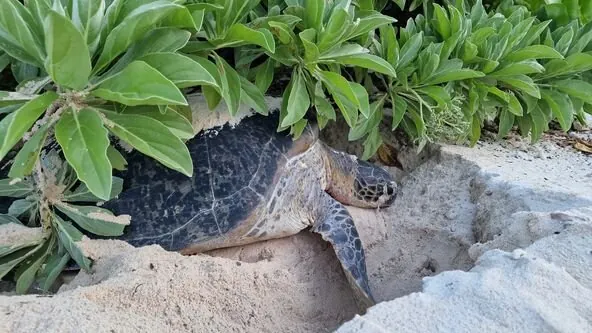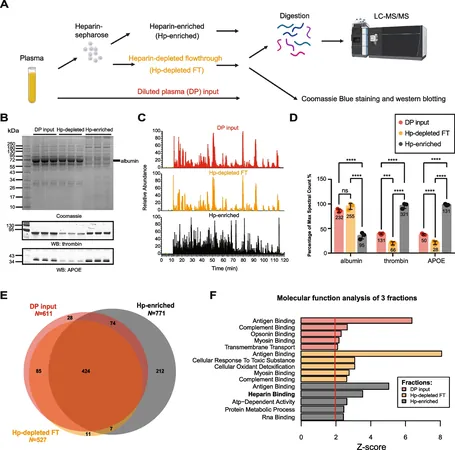
Groundbreaking Study Unveils Fertility Secrets to Save Turtles and Tortoises from Extinction!
2024-10-14
Author: Amelia
Introduction
A recent groundbreaking study has shed light on the fertility and reproductive health of wild turtles and tortoises, crucial insights that could play a vital role in reversing the alarming decline of these species. Collaborating scientists from the University of Sheffield, along with the Save Our Seas Foundation, Nature Seychelles, and the Fregate Island Foundation, have pioneered a novel technique that distinguishes between fertilization failures and early embryo losses in reptiles—a significant step forward in conservation science.
Methodology and Findings
Using highly specialized microscopic techniques originally created for studying bird eggs, the researchers are the first to estimate true fertility rates among turtle and tortoise populations. The results, which were published in the journal Animal Conservation, revealed that many eggs left undisturbed in nests throughout their incubation period were indeed fertilized, but the embryos did not survive to hatching.
Conservation Implications
The study highlights the critical plight of turtles and tortoises, which are now facing a global extinction crisis. These creatures play essential roles in their ecosystems, and their loss could have catastrophic implications on environmental health. By identifying the reasons behind reproductive failures, the research opens the door for more focused and effective conservation strategies.
Results
The newly developed method was applied to five different species of turtles and tortoises, both in the wild and in captivity. Astonishingly, the majority—75%—of undeveloped eggs examined were found to be fertilized, but most of the embryos died early on. This was particularly evident in wild population studies of hawksbill and green sea turtles, where embryo loss predominated. Conversely, the Giant Aldabra tortoise showed a somewhat higher rate of fertilization failure, suggesting that this species may face greater difficulties in reproduction.
Future Directions
With the ability to accurately assess fertility and embryo survival rates, conservation teams can now hone their strategies. For endangered sea turtles, efforts can pivot towards protecting nests from harsh environmental threats to boost embryo survival rates. Meanwhile, for tortoises, ensuring that egg-laying females have access to healthy, fertile mates is essential for improving reproductive outcomes.
Statement from Researchers
Dr. Alessia Lavigne, a Ph.D. student at the University of Sheffield and lead author of the study, stated, 'We've not only filled significant gaps in our understanding of turtle and tortoise fertilization, but we've also developed a reliable method for future research.' The research team’s findings are exciting for conservation partners, with many already indicating that this new understanding is instrumental in addressing critical issues related to hatching failures and overall reproductive success, especially in the face of looming threats from global warming and climate change.
Next Steps
Dr. Nicola Hemmings, head of the research group, elaborated on future steps, stating, 'Our next goal is to correlate our accurate data on fertilization and embryo death rates with environmental conditions such as temperature and pollutant exposure to understand how these factors may contribute to reproductive failures.'
Broader Implications
The techniques pioneered in this study hold promise beyond turtles and tortoises, potentially benefiting other threatened reptiles like crocodiles and snakes. This research is not only pivotal for the species studied but heralds a broader understanding of reproductive challenges across the animal kingdom.
Conclusion
Conducted in the stunning Seychelles and the UK, this research marks a significant milestone, with Lavigne becoming the first Seychellois scientist to address conservation research on Cousin Island, a protected nature reserve. The results of this vital study signal a beacon of hope in the ongoing efforts to safeguard the future of some of our planet's most vulnerable species. Stay tuned, as this discovery could be the turning point needed to save these remarkable reptiles!









 Brasil (PT)
Brasil (PT)
 Canada (EN)
Canada (EN)
 Chile (ES)
Chile (ES)
 España (ES)
España (ES)
 France (FR)
France (FR)
 Hong Kong (EN)
Hong Kong (EN)
 Italia (IT)
Italia (IT)
 日本 (JA)
日本 (JA)
 Magyarország (HU)
Magyarország (HU)
 Norge (NO)
Norge (NO)
 Polska (PL)
Polska (PL)
 Schweiz (DE)
Schweiz (DE)
 Singapore (EN)
Singapore (EN)
 Sverige (SV)
Sverige (SV)
 Suomi (FI)
Suomi (FI)
 Türkiye (TR)
Türkiye (TR)